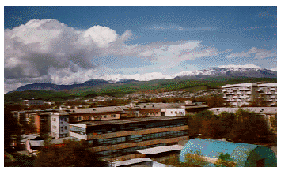Bashiri Working Papers on
Central Asia
prepared by
Professor Iraj Bashiri
Dushanbe, Tajikistan

| Tajik Gallery
Prepared by
Iraj Bashiri
Copyright 1998
|
| The Tajik Gallery brings you a visual appreciation of various aspects of Tajik material culture as they become available. The opening sellection is a delightful look at the costumes of the Tajiks, especailly of Kuhistan and Badakhshan Kuhi. The original plates were prepared by Y. P. Gremyachinskaya in 1969 for the Institute of History in the Name of Ahmad Donish, Academy of Sciences of the Republic of Tajikistan. The Linguistic Map of Tajikistan was prepared originally by Iraj Bashiri to accompany his "Languages of Tajikistan in Perspective."
|
The Gallery includes:
- Ethno-Linguistic Map of Tajikistan
- Costumes
- Tajik Headgear
- Jewelry
Fabrics (in preparation)
Painting (in preparation)
Architectural Design (in preparation)
|

| Essays on Tajik Music
and Literature
Edited and Translated by
Iraj Bashiri:
| Isamatov, Ma'ruf, The Musical Culture of Iran at the Beginning of the Middle Ages
Rajabov, Askarali, Historical Traditions of the Time of Rudaki
Ya'qubshah, Yusefshah, The Image of Funerary Dances on Sughdian Ossuraries
Nurjanov, Nizam, Constructive Customs in the Music and Dance of the Tajiks
Rahmanov, Rushan, The Role of Surud in the Mughul Dukhtar Legend
Azizova, Faraqat, Some Shashmaqam Puzzles in Tajik Music
|
Other features:
Tajik Identity
Iraj Bashiri, Samanid Renaissance and Establishment of Tajik Identity
Iraj Bashiri, Factors Affecting Tajik Identity
Iraj Bashiri, Tajik Ethnicity in Historical Perspective
Iraj Bashiri, The Languages of Tajikistan in Perspective
Iraj Bashiri, The Yaghnobis
Kyrgyz Identity
Bashiri, Iraj, Kyrgyz National Identity
- Introduction
- The Roots of Kyrgyz Culture
- Education
- Ideology
- Regionalism
- Ethnicity
- Conclusion
Asankanov, Abilabek, Ethnic Conflict in the Osh Region in Summer 1990: Reasons and lessons
Bashiri, Iraj, The Kyrgyz Epic: Manas
- The Manaschi and His Audience
- The Role of Islam in the Epic
- Manas's Early Life
- Almambet's Story
- Manas Marries Kanikei
- Funeral Repast for Koketei Khan
- Manas's Death
| Many of the difficulties that the newly established republics of Central
Asia experience today are directly related to V. I. Lenin's 1924 national-administrative
divisions of the region. In this regard, Rahim Masov's History
of a National Catastrophe,translated here from Tajiki, is invaluable.
The book is in two parts. In part one, Masov reveals the inequities in the
system that allowed Soviet policy makers to take advantage of some groups
at the expense of some others. The manner by which the Tajiks were gradually
divested of their cultural heritage and economic rights by their Soviet
brothers, especially those from Russia and Uzbekistan, is a case in point.
In part two, Masov produces the rare archival materials that led him to
his conclusions and, more importantly, to the realization that the story
of Tajikistan in the 1920's must be told.
| 
|
More articles:
- Sulhiniso Rahmatullaeva,The Peculiarities of Samanid Decorative Architecture
- Sulhiniso Rahmatullaeva,
Architectural Decoration in Ma Wara' al-Nahr During the Khujandi Era
- L. Dodkhoudoeva & M. Sharif,
Firdowsi and His Shahnamein Tajik Representational Art
- The heroes of Firdowsi's Shahname, especially Rustam, have a special
place in Tajik society and thought. To commemorate the exploits of Rustam,
the Tajiks used to hold an annual celebration in which the champion and
his retinue participated. Now that tradition is superseded by more modern
concerns. Nizam Nurjanov's keen insight in Carnival
Procession with Rustam fills the gap.
- During its heyday, Tajik cinema boasted of great cinematographers like
Davlat Khuda Nazar and Saif Rahimov as well as accomplished actors like
Bensiyon Arievich Kimiyagarov. As a result of the contribution of such talented
individuals, Tajik Film produced a number of worthy features, including
an anthology depicting stories from Firdowsi's epic, the Shahname. Epic
on the Screen by A. Ahrorov, deals with the specifics of this exciting
period of Tajik cinema.
- In the early 1990's if you stood next to Almaty's only mosque and asked
passersby where the mosque was, most of the populace could not direct you
to it. The situation, of course, has changed; cities like Almaty and Bishkek
have refurbished their mosques to meet the need of their ever-increasing
Muslim populations. The contribution of A. Bazarov and R. Majidov, entitled
Islamic Survivals and
the Ways to Overcome Them, is part of a longer study that harks
to the days when Islam was under Soviet control and when strategies were
being devised and implemented to eradicate it from the Soviet scene.
- Iraj Bashiri's "Islam
and Communism: Tajikistan in Transition" deals with regionalism
and ethnic conflicts between the north (Khujand, formerly Leninabad) and
the south (Kulab and Qurqanteppe). This paper was originally read at the
conference entitled The Case of the Former Soviet Central Asian Republics,
held at the University of Minnesota, April 11-13, 1996. It has been submitted
to appear as part of the proceedings of that conference. The material is
also being revised to be included in Bashiri's forthcoming Role of Russia
in the Tajik-Uzbek Conflict: 1876-1996.
- Iraj Bashiri, The Bukhara
of Sadriddin Aini
- Abdulhai Komili, Science in
the Epoch of Firdowsi
- Iraj Bashiri,
Muslims and Communists Vie for Power in Tajikistan
- Iraj Bashiri, Neither Tajiki
Nor Uzbeki: Russian
- D. Davudov, The Coins of the
Time of Kamal Khujandi
Top of the page
Home | Central
Asia | Central Asia & Iran | Iran
| Tajikistan Update
| Tajikistan in the 20th Century









